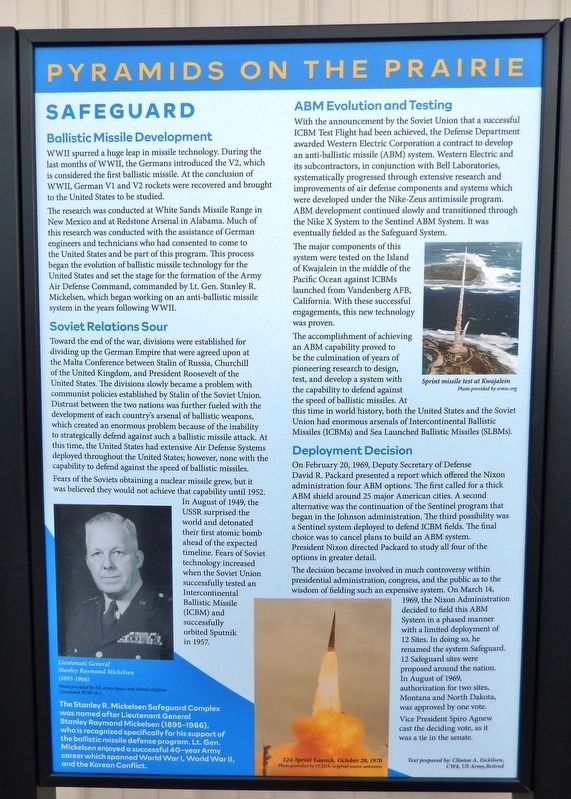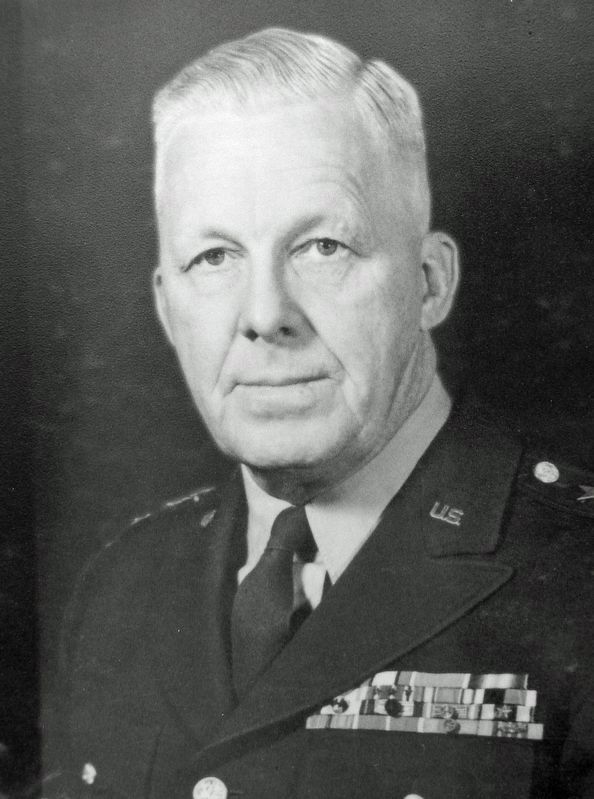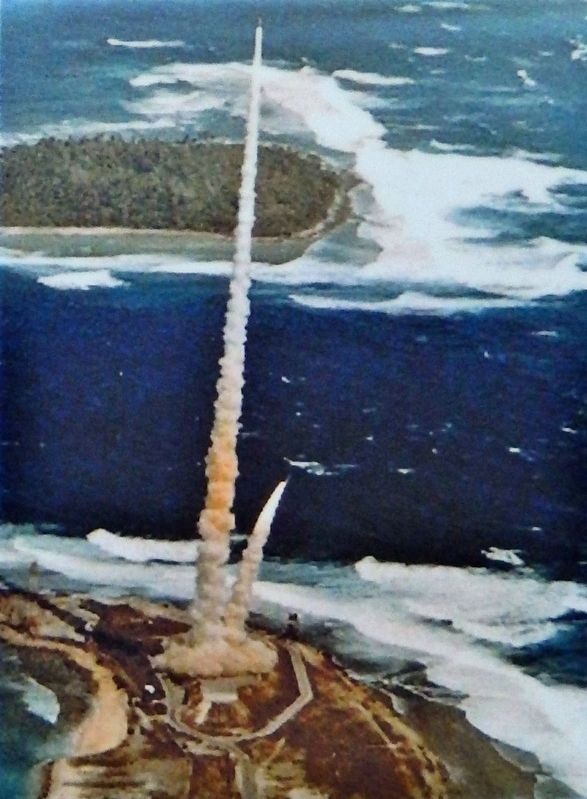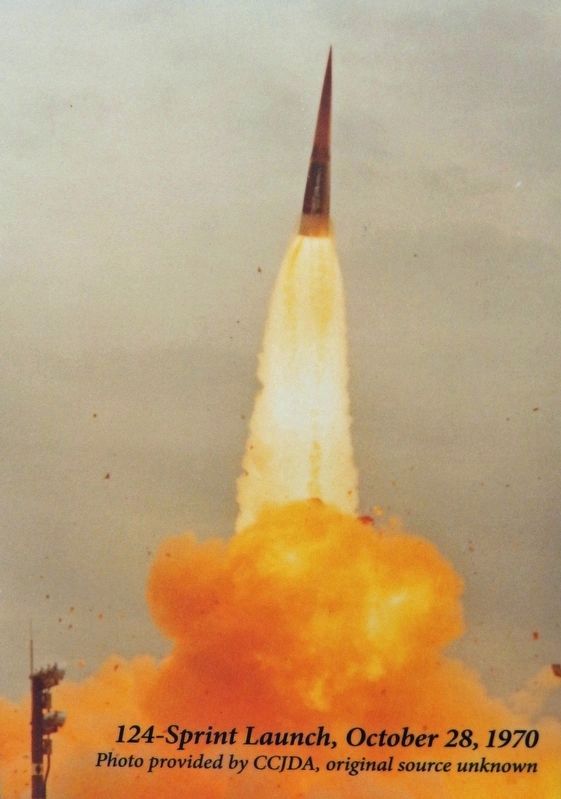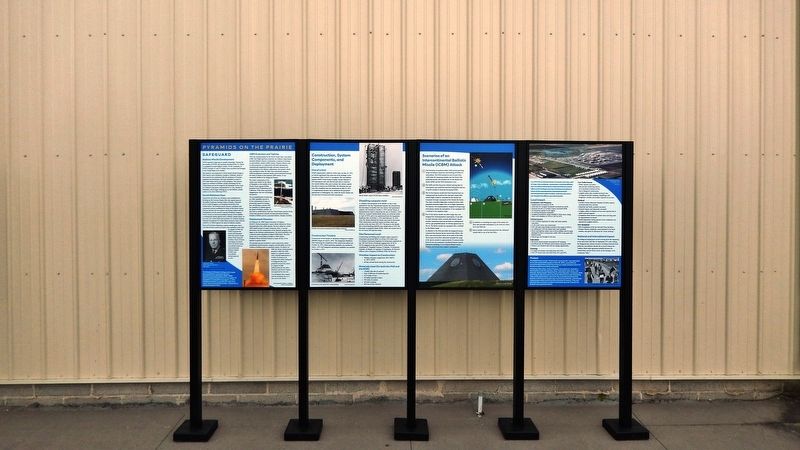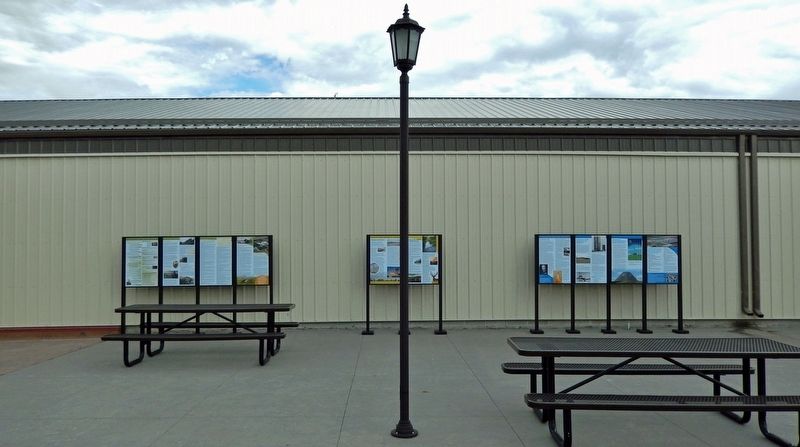Langdon in Cavalier County, North Dakota — The American Midwest (Upper Plains)
Safeguard
Pyramids on the Prairie
Ballistic Missile Development
WWII spurred a huge leap in missile technology. During the last months of WWII, the Germans introduced the V2, which is considered the first ballistic missile. At the conclusion of WWII, German V1 and V2 rockets were recovered and brought to the United States to be studied.
The research was conducted at White Sands Missile Range in New Mexico and at Redstone Arsenal in Alabama. Much of this research was conducted with the assistance of German engineers and technicians who had consented to come to the United States and be part of this program. This process began the evolution of ballistic missile technology for the United States and set the stage for the formation of the Army Air Defense Command, commanded by Lt. Gen. Stanley R. Mickelsen, which began working on an anti-ballistic missile system in the years following WWII.
Soviet Relations Sour
Toward the end of the war, divisions were established for dividing up the German Empire that were agreed upon at the Malta Conference between Stalin of Russia, Churchill of the United Kingdom, and President Roosevelt of the United States. The divisions slowly became a problem with communist policies established by Stalin of the Soviet Union. Distrust between the two nations was further fueled with the development of each country's arsenal of ballistic weapons, which created an enormous problem because of the inability to strategically defend against such a ballistic missile attack. At this time, the United States had extensive Air Defense Systems deployed throughout the United States; however, none with the capability to defend against the speed of ballistic missiles.
Fears of the Soviets obtaining a nuclear missile grew, but it was believed they would not achieve that capability until 1952. In August of 1949, the USSR surprised the world and detonated their first atomic bomb ahead of the expected timeline. Fears of Soviet technology increased when the Soviet Union successfully tested an Intercontinental Ballistic Missile (ICBM) and successfully orbited Sputnik in 1957.
ABM Evolution and Testing
With the announcement by the Soviet Union that a successful ICBM Test Flight had been achieved, the Defense Department awarded Western Electric Corporation a contract to develop an anti-ballistic missile (ABM) system. Western Electric and its subcontractors, in conjunction with Bell Laboratories, systematically progressed through extensive research and improvements of air defense components and systems which were developed under the Nike-Zeus antimissile program. ABM development continued slowly and transitioned through the Nike X System to the Sentinel ABM System. It was eventually fielded
as the Safeguard System.
The major components of this system were tested on the Island of Kwajalein in the middle of the Pacific Ocean against ICBMs launched from Vandenberg AFB, California. With these successful engagements, this new technology was proven.
The accomplishment of achieving an ABM capability proved to be the culmination of years of pioneering research to design, test, and develop a system with the capability to defend against the speed of ballistic missiles. At this time in world history, both the United States and the Soviet Union had enormous arsenals of Intercontinental Ballistic Missiles (ICBMs) and Sea Launched Ballistic Missiles (SLBMs).
Deployment Decision
On February 20, 1969, Deputy Secretary of Defense David R. Packard presented a report which offered the Nixon administration four ABM options. The first called for a thick ABM shield around 25 major American cities. A second alternative was the continuation of the Sentinel program that began in the Johnson administration. The third possibility was a Sentinel system deployed to defend ICBM fields. The final choice was to cancel plans to build an ABM system. President Nixon directed Packard to study all four of the options in greater detail.
The decision became involved in much controversy within presidential administration, congress, and the public as to the wisdom of fielding such an expensive system. On March 14, 1969, the Nixon Administration decided to field this ABM System in a phased manner with a limited deployment of 12 Sites. In doing so, he renamed the system Safeguard. 12 Safeguard sites were proposed around the nation. In August of 1969, authorization for two sites, Montana and North Dakota, was approved by one vote. Vice President Spiro Agnew cast the deciding vote, as it was a tie in the senate.
Text prepared by: Clinton A. Esckilsen, CW4, US Army, Retired
The Stanley R. Mickelsen Safeguard Complex was named after Lieutenant General Stanley Raymond Mickelsen (1895-1966), who is recognized specifically for his support of the ballistic missile defense program. Lt. Gen. Mickelsen enjoyed a successful 40-year Army career which spanned World War I, World War II, and the Korean Conflict.
Topics. This historical marker is listed in these topic lists: Air & Space • War, Cold • War, World II. A significant historical month for this entry is August 1969.
Location. 48° 45.623′ N, 98° 22.072′ W. Marker is in Langdon, North Dakota, in Cavalier County. Marker is at the intersection of 8th Avenue and 3rd Street, on the right when traveling west on 8th Avenue. Marker is located in Boyd Block Plaza. Touch for map. Marker is at or near this postal address: 801 3rd Street, Langdon ND 58249, United States of America. Touch for directions.
Other nearby markers. At least 8 other markers are within walking distance of this marker. Construction, System Components, and Deployment (here, next to this marker); Scenarios of an Intercontinental Missile (ICBM) Attack (here, next to this marker); Local Impact (here, next to this marker); Progress on the Prairie (here, next to this marker); Cavalier County Agriculture (here, next to this marker); Cavalier County Places (here, next to this marker); Early History (here, next to this marker); Cavalier County Timeline (here, next to this marker). Touch for a list and map of all markers in Langdon.
Related markers. Click here for a list of markers that are related to this marker.
Credits. This page was last revised on January 19, 2023. It was originally submitted on January 16, 2023, by Cosmos Mariner of Cape Canaveral, Florida. This page has been viewed 116 times since then and 36 times this year. Photos: 1, 2, 3, 4, 5, 6. submitted on January 19, 2023, by Cosmos Mariner of Cape Canaveral, Florida.
